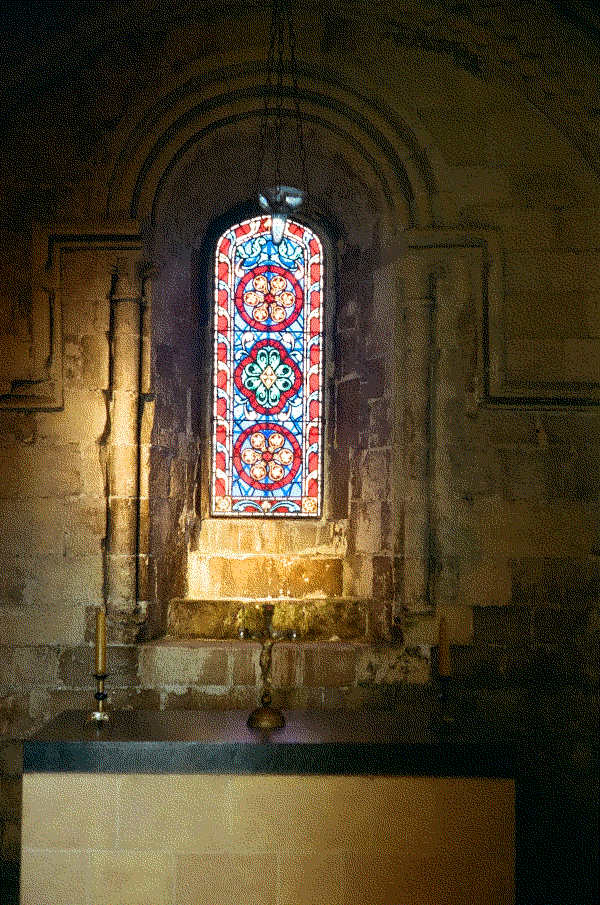One might think the landscape of Christian worship music has undergone a profound transformation, moving from a foundation of historical hymns and monotone chants, to a style heavily influenced by modern popular music (praise rock band). And, while proponents of this shift argue that it makes worship more accessible and emotionally engaging, this evolution presents a critical tension between two distinct modes of spiritual encounter: the purely emotive, and the intellectually reflexive. The adoption of a popular aesthetic, with its emphasis on performance and feeling, flashing laser light show, smoke, and literal popular music guitarists risks belittling the sacred mystery and obfuscating the deep, personal reflection that traditional forms of worship music have long cultivated.
In the past, there were young people. I know its difficult to believe, but the late generation boomers, and very early Gen-X were young once too. And, just like we less young people today, they had their popular music. It was, in fact, their fault. They wanted to have it all. They want the church to return to what it was in the past, so they thought of including the then popular music, set with quasi-religious overtones might draw in their wayward companions.
So now, we have the modern praise band. Picture it: a large arena style stage and seating area, cold, industrial, uninviting. The house light go dark, and the stage it lit up like the latest production of BTS ready to wow audiences of screaming fans. The modern praise band mirrors the structure and instrumentation of a rock concert. Electric instruments, driving, repetitive, chorus-driven song structures that are designed to evoke an immediate, visceral response. Emotion. No connection, but almost transendental motion meditation. It trigers chakras, if you're into that sort of thing. This worship mode prioritizes a collective emotional high. You've been there, in a room full of thousands of dark bodies, in a dark room, as sound waves wash over you, literally forcing you have some sort of spiritual response. A shared effervescence that aims for a direct connection with the divine is supposed to become reality. The lyrics, often simple and repeated, serve as mantras to build momentum, and the performance becomes a spectacle in itself—a "holy rock concert", where the audience is encouraged to lose itself in the moment. However, by engaging primarily with the senses and emotions, this approach can bypass the intellect entirely, reducing the sacred to a simple muse for an ephemeral experience rather than a profound object of contemplation.
And, in a world where brainrot is understood by the young, and avoided at all costs, their content being self-curated, it is no challenge to understand how their parents get caught up in such unintelligent harmonic language. They are the ones that can't put the phone down, and they are the ones caught up in the emotive, quick sell, splash-and-dash worship enviornment.
Re-engagement with the intellectual dimension of sacred music thereby offers a means by which a deeper understanding may be had, transcending the mere impulse of experience.
The Cathedral. A thousand year old stone monument to glory. Personal? Perhaps. Profain? Depends on who's king at the time. Sacred? Surely. In stark contrast to the sensoral feast, traditional music forms—from Gregorian chant to complex anthems—demand intellectual engagement. The poetic lyrics of a hymn are not mere refrains, but dense theological arguments, requiring the congregation to read, understand, and reflect on a rich tapestry of metaphor and meaning. For those that don't know WHAT an "Ebenezer" is, have no hope of understanding why one might be raised up (and it has nothing to do with Dickens!). Furthermore, the very act of learning and performing these songs, often with four-part harmonies and intricate musical arrangements, necessitates a degree of musical and linguistic literacy. This intellectual "gatekeeping" is not a form of exclusion. Rather it is a means of engagement. It asks those involved to enter a deeper conversation with the text and the tradition, making the emotional resonance that follows not a fleeting reaction, but the earned culmination of thoughtful reflection, and historical connection. It is imperial, factual, truth that watching screens changes the branwave patterns in humans. The emotional qualities of a chant or hymn move the listener precisely because they have first engaged the mind and heart in the work of understanding. Watching words on a screen can never link these meanings to song because they simply do not engage the parts of the brain necessary for meainng, connection, thought, and understanding.
The performative dimension of modern worship may be perceived as a potential threat to the sanctity of sacred mystery. However, I tell you this: true sacred muisc is alive and well. Through the creation of a spectacle intended for entertainment and spiritual uplift, the divine may be inadvertently regarded as a consumable product. In our comfort culture, commidity is all too commonly sought and bought as a daily snack. Divine blessings, $24.95, now ready in under 30 minutes. Such a methodology not only trivializes the profundity of the ineffable mystery, but also constrains the capacity for personal reflection, substituting it with a form of collective, unexamined emotion. That, couple with the agreeable nature of popular nod to performance on the guitar, and the unfortunate abandonmnet of fine art (including MUSIC) means that the unwashed masses will migrate to the lowest, most comfortable style of corporate worship - one in which there brains don't have to be engaged. Conversely, the poetic and historical connectivity inherent within traditional sacred music presents a pathway toward a more profound and enduring faith; a faith predicated upon a foundation of intellectual curiosity, and contemplative engagement, as opposed to that which is predicated upon the transient emotional stimulus of contemporary musical forms. Re-engagement with the intellectual dimension of sacred music thereby offers a means by which a deeper understanding may be had, transcending the mere impulse of experience.
